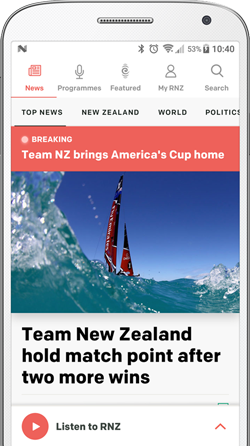
Officials are now looking into whether there should be minimum standards for critical infrastructure for cyber-protection. File photo. Photo: 123RF
Government officials are looking at developing minimum standards for the protection of critical communications infrastructure.
Ministry of Business, Innovation and Employment officials joined Media and Communications Minister Paul Goldsmith in a select committee hearing about communications infrastructure on Tuesday.
They confirmed the work started by the Department of Prime Minister and Cabinet to look into cyber resilience for critical national infrastructure was continuing.
The project sought consulation from the public in mid-2023 over potential reform and Cabinet in December last year agreed on a National Risk and Resilience Framework to manage risks able to "potentially derail us as a country".
The officials said the project was now looking into whether there should be minimum standards for critical infrastructure for cyber-protection.
"Most of my conversations with the telecommunications providers in New Zealand, it's obviously they're very, very, very aware of this risk, and it's something they take extremely seriously," MBIE general manager James Hartley told MPs on the committee.
He also said a separate project - the Pacific Cyber Security Initiative - had been transferred from the Computer Emergency Response Team (CERT) to the Government Communications Security Bureau spy agency.
It follows an Australian naval ship - the HMAS Canberra - shutting down wireless internet and radio services across much of New Zealand by accident.
Hartley said that appeared to be a case of human error.
"There is a pretty well established process for visiting naval ships coming to New Zealand, where they apply through MFAT for the frequencies they would like to use when they're in the jurisdiction of New Zealand.
"It looks like in this case, the ship may have forgotten to turn its radar off. So that's obviously concerning. Once officials were alerted to that, that was escalated through Defense Force and through the Australian Defense Force and back to the ship, the HMS Canberra, for resolution."
Goldsmith said the incident was a concern to him.
"That's a ongoing conversation... it is a concern, and we wouldn't want to see it happen too often."
During the hearing, Goldsmith also confirmed sattelite communications providers - like Elon Musk's Starlink, and other competitors moving to make use of the technology - would need to be looked at in terms of whether they would need to be regulated in the same ways domestic providers were.
Hartley said there were two aspects to that: whether those providers would need to pay the Telecommunications Development Levy, and whether they could be included in dispute resolution provisions like those offered to customers of domestic providers.
Goldsmith said, however, that New Zealand had good connectivity overall and with more competition it was going to become "fundamentally almost going to be impossible to get lost in this country in before too long, and which, which, you know, will be transformational in terms of search and rescue and all those sorts of things".
The government was also looking at setting up more 5G cell towers.
Sign up for Ngā Pitopito Kōrero, a daily newsletter curated by our editors and delivered straight to your inbox every weekday.






